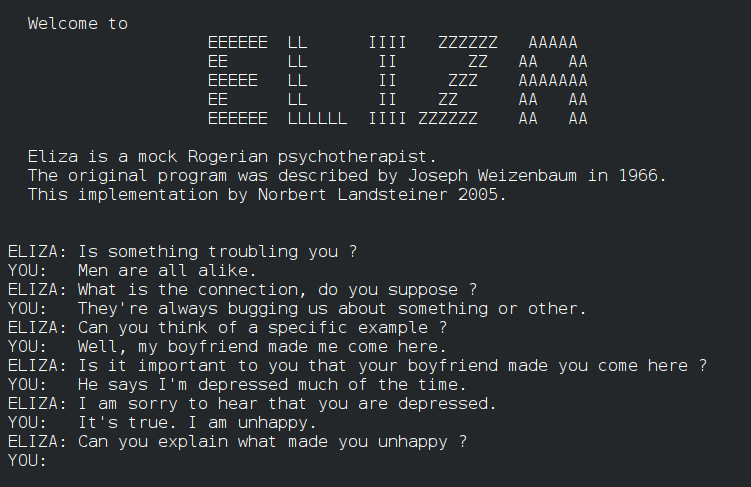The generative AI revolution!

Where are the limits of GenAI’s capabilities? Generative AI is one of the most important technological discoveries of the history, and it is just getting started. As a type of artificial intelligence capable of creating a wide variety of data, including photos, videos, music, text, and 3D models, it is accomplished by identifying patterns in the data that already exist and uses those patterns to produce fresh and original findings. GenAI is a significant tool for every industries: gaming, entertainment or product design, since it can create extremely realistic and complicated material that resembles human creativity. GenAI’s capabilities have substantially improved as a result of recent developments in the field, like GPT (Generative Pre-trained Transformer) or Midjourney. These developments have created fresh opportunities for GenAI to address challenging issues, produce works of art, and even progress science.
AI is said to be generative because it creates something that did not exist before, and this distinguishes it from discriminative AI, which distinguishes between different types of data. The key to generative AI lies in its ability to learn from large quantities of data, and to extract complex models.
Since when?
Generative AI has been around for years, perhaps ever since ELIZA, a chatbot that simulates a conversation with a therapist, was developed at MIT in 1966.

That said, new technologies and innovations over the years have led to the development of new generative AI systems. Investment in generative AI increased in the early 2020s, with large companies such as Microsoft, Google and Baidu, as well as many smaller companies developing GenAI models. Among the best known is ChatGPT, an AI chatbot with the ability to generate remarkably human written output. Other platforms such as DALL-E and Stable Diffusion have attracted attention for their ability to create vibrant and realistic images from text messages.
These and similar systems are often referred to as models, because they represent an attempt to simulate or model some aspect of the real world from a (sometimes very large) subset of information about it.
Uses and operation of GenAI
Generative artificial intelligence is used in many fields and has a wide variety of applications. Indeed, it has potential applications in many different types of industry, including software development, marketing and fashion. Artificial intelligence is about recording, analyzing and understanding information. On the other hand, it can create new calculations based on what it has learned. In the same way, AI enables a machine to learn from existing data and provide solutions based on the problems it has to deal with, thanks to Machine Learning.
This is how GenAI processes and analyzes huge quantities of data at thaumaturgical speed. Calculations enable the machines to perform the same tasks as humans, namely creating content based on existing models.
The “specific features” of GenIA are:
- Text generation, which involves using machine learning models to generate new text based on patterns learned from existing text data. Text generation has many applications in natural language processing, chatbots and content creation.
- Image generation, which is the process of using deep learning algorithms such as VAE, GAN and, more recently, stable diffusion to create new images that are visually similar to real-world images. Image generation can also be used for data augmentation to improve the performance of machine learning models, as well as for artistic creation, product image generation and more.
- Video generation, which uses deep learning methods such as GAN and video broadcasting to generate new videos by predicting images based on previous images. It can be used in a number of areas, including entertainment, sports analysis and autonomous driving.
- Speech generation, which is often used in conjunction with video generation, and whose models can be powered by transformers. Speech generation can be used for text-to-speech conversion, virtual assistants and voice cloning.
Generative AI has a wide range of applications that go beyond the generation of text, video, images, speech and data augmentation. For example, it can be used for music generation, game development, healthcare, etc. In healthcare, generative AI can help generate synthetic medical data to train machine learning models, develop new drugs and design clinical trials. These are just a few examples of the many possibilities offered by generative AI and, as the technology progresses, there will undoubtedly be more advances to come.

Generative AI is therefore a disruptive technology that enables machines to generate concepts that used to rely on humans. Even though the term Generative AI is associated with Deepfake, we are far from having explored the limits of this intelligent technology which is still in a learning phase. These Artificial Intelligence models proposed by Talend are viable concepts for organizations to use, as they make the generation of art images and the search and analysis of data faster and less costly.
Limits and shortcomings of GenAI
However, generative artificial intelligence poses certain ethical and social challenges. As these models become more sophisticated, it is important to consider how they are used and what implications they have. There are concerns about the generation of false or misleading content, as well as the risk of bias inherent in machine learning data.
Despite these challenges, generative artificial intelligence has immense potential to stimulate creativity, improve productivity and offer new ways of interacting with technology. As the models are developed and refined, it is essential to encourage ethical and responsible debate about their application and to ensure that they are used in a way that benefits society as a whole.
Moreover, the results of these systems are so accurate and precise that many are raising philosophical questions about the nature of consciousness and worrying about the economic impact of generative AI on human employment. But while all these creations of artificial intelligence are undoubtedly making the headlines, what’s going on beneath the surface is far less important than some people assume.
The other risk of GenIA is its misuse, i.e. its use to create fake news or ‘deepfakes’, which can then be used to defraud or manipulate people.
In short, generative AI has truly taken the world by storm, revolutionizing the way we communicate, work and innovate. ChatGPT, with its 100 million users, is a testament of the rapid adoption and widespread impact of the cutting-edge technology reached with the power of IA. Its stable distribution and popularity on GitHub only serve to reinforce its transformative potential.
Although still in its infancy, generative AI is already shaping the future in a variety of areas, and its influence on our lives is set to grow exponentially. The adoption of this powerful technology will open up unimaginable possibilities and usher in a new era of creativity, efficiency and progress. Despite its favorable profile, we still need to consider the potential risks of this system, to avoid tipping the balance towards a threatening technology.
Stay tuned!

- Contacto DPO: privacy@telecoming.com
- Finalidad del tratamiento: suscripción al blog.
- Legitimación del contrato: consentimiento.
- Destinatario de cesiones o transferencias: no se efectúan transferencias de datos fuera de la UE.
- Derechos de las personas interesadas: acceso, rectificación, supresión, oposición, limitación del tratamiento, portabilidad de los datos e interposición de reclamación ante la AEPD.
